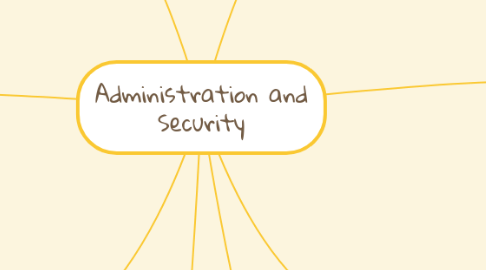
1. Managerial Role
1.1. Disaster managerment
1.2. Full backup or database dump
1.3. Incremental backup
1.4. Concurrent backup
1.5. Manage data distribution and use
2. Technical Role
2.1. Evaluate , select and install DBMS and related utilities
2.2. Design and implement databses and applications
2.3. Test and evaluate databases and applications
2.4. Operate the DBMS , utilities and applications
2.5. Train and support users
2.6. Maintain the DBMS , utilities and applications
3. Security Goals
3.1. Confidentality
3.2. Compliance
3.3. Integrity
3.4. Confidentally
3.5. Availability
4. Components of CASE tool
4.1. Graphics
4.2. Screen painters and report generators
4.3. Integrated repository
4.4. Analysis Segment
4.5. Program documentation generator
5. Data
5.1. Dirty data
5.1.1. Data that suffer from inaccuracies and inconsistencies
5.2. Data Quality
5.2.1. Ensuring accuracy , validity and timeliness of data
5.3. Master Data Management software
5.3.1. Helps prevent dirty data by coordinating across multiple systems
5.4. Data Profiling Software
5.4.1. Determine data patterns and compare them against standards defined by the organization
6. Special Considerations
6.1. Technological Aspect
6.1.1. Selecting , installing , configuring and monitoring the DBMS to ensure that it operates efficiently
6.2. Managerial Aspect
6.2.1. Careful planning to create an appropriate organizational structure
6.3. Cultural Aspect
6.3.1. Listening to people's concerns about the system and explaining it the uses and benefits
7. Types of Tablespace
7.1. SYSTEM
7.1.1. Stores the data dictionaty data
7.2. USERS
7.2.1. Stores the table data created by the end users
7.3. TEMP
7.3.1. Stores the temporary tables and indexes created during the execution of SQL statements
7.4. UNDOTS
7.4.1. Stores databse transaction recovery information
8. Evolution of the Database Administration Function
8.1. Information System department (IS)
8.1.1. Provides end users with data management support and solutions for information needs
8.2. Database Administrator
8.2.1. Responsible for control of the centralized and shared database
8.3. Systems Administrator
8.3.1. General coordinator of all DBAs
8.4. Data Administrator (DA) or Information resource manager (IRM)
8.4.1. Has a higher degree of responsibility and authority than the DBA

